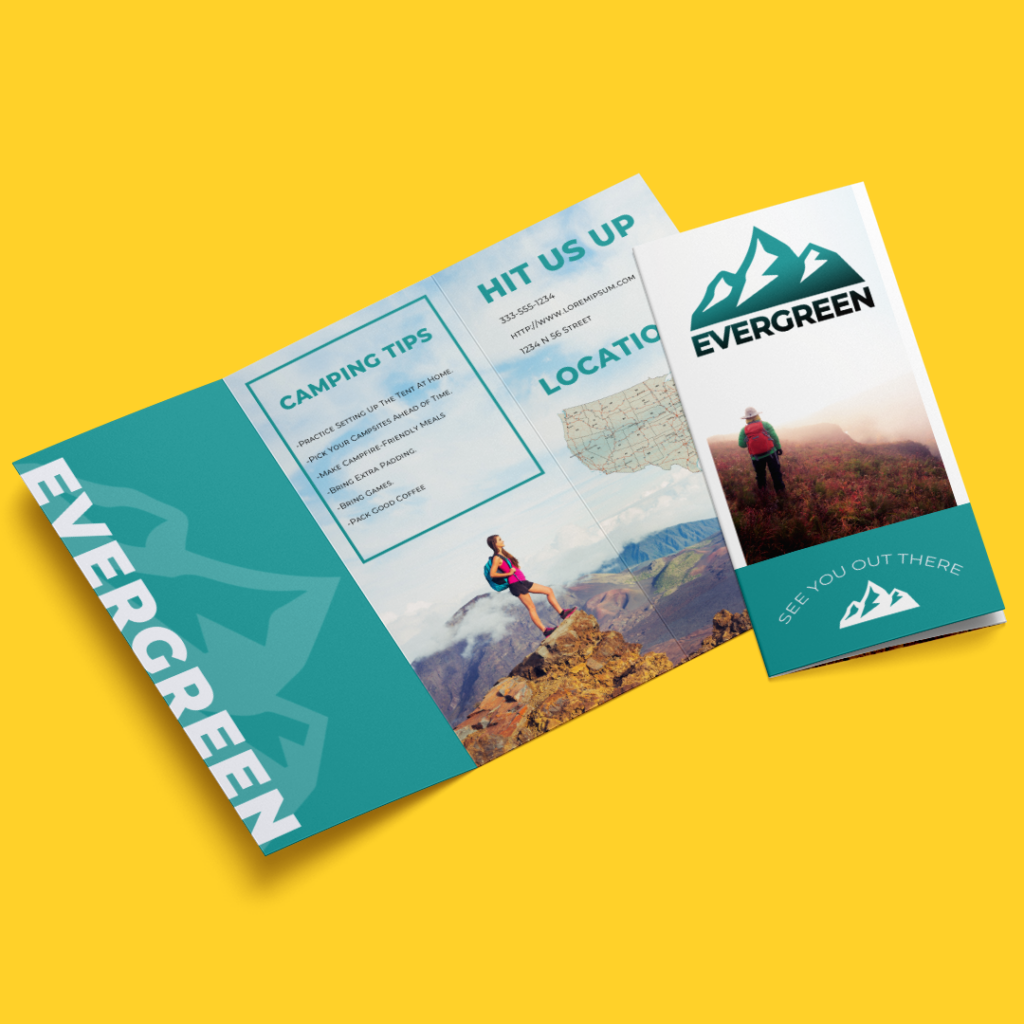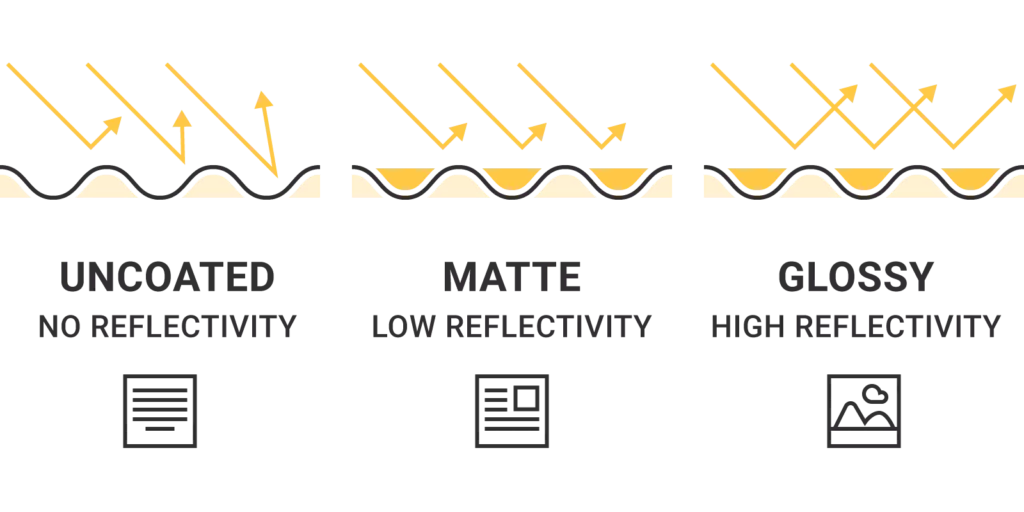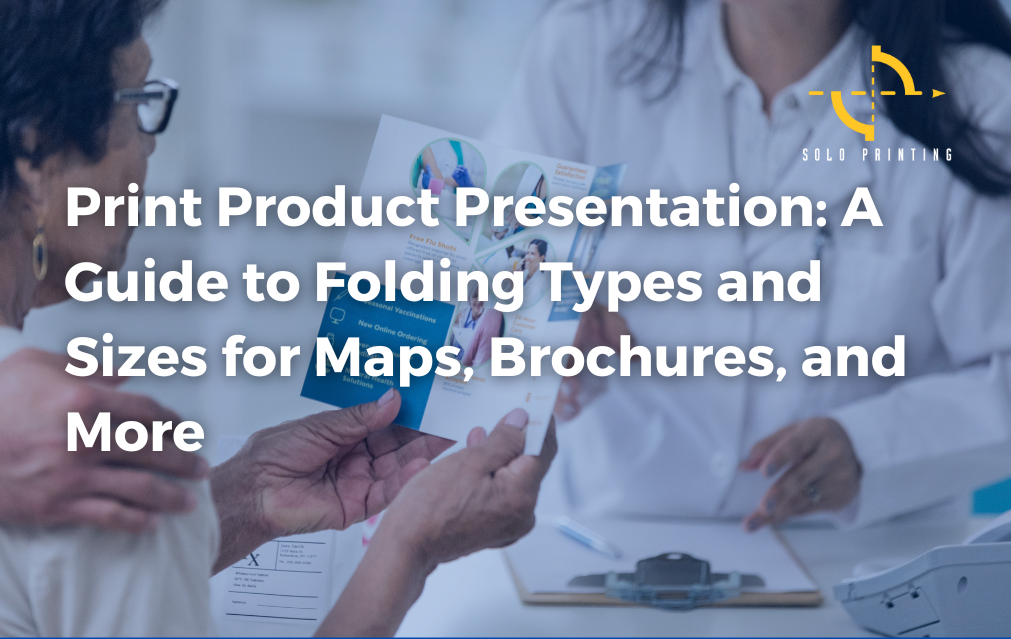When it comes to creating the idea for your print campaign, the presentation of your materials matters. Whether you’re designing maps, brochures, or informational pamphlets, choosing the right fold can make a significant impact on how your content is perceived.
In this guide, we’ll explore common types of folds, sizes, and other important information used for specs when creating various printed pieces, helping you make informed decisions for your next project!
How Can Print Marketing Help Businesses (Big AND Small)?
- Raises awareness of your brand
- Drives new leads to your business (in-store or online)
- Promotes the sales of both new and existing products (or services)
- Introduces a new product or service to the market
- Helps to differentiate your product from your competitors’
Let’s not stop there. Here are some statistics to really convince you it works.
Top Print Marketing Statistics
- Print and direct mail marketing boast a 9% customer response rate compared to other digital marketing channels, which hover around 1% … or less. (DMA)
- The direct mail household response rate is 5.1% (compared to .6% email, .6% paid search, .2% online display, .4% social media). (DMA)
- Print ads generate a 20% higher emotional response with consumers, leading to greater conversion rates. (R.C. Brayshaw, 2020).
- By combining print and digital ads, it will make online campaigns 400% more effective (Top Media Advertising)
- 79% of consumers find reading physical mail more convenient than reading emails.
- Letter-sized direct mail performs best for lead generation with 15.1% response rate. (DMA)
- 82% of consumers trust print ads most when making a purchasing decision (Burstein, 2017)
- 80% of consumers act on directed print mail advertisements compared to 45% who act on digital advertisements. (Potochny, 2017)
- 77% of consumers say print drives higher levels of recall.
- Over 90% of consumers say that print ads are easier to read than digital.
- Physical Print ads require 21% less cognitive effort to read, process, and remember than digital ads. (R.C. Brayshaw, 2020)
- Digital Ad blockers are used by 33% of Millennials as of 2019. On the other hand, 62% of people will read paper ads rather than throw them away.
Now that you know all that…let’s get into how folding can improve your presentation and how your information can be ingested by readers!
Accordion Fold (or Z-Fold)

The accordion fold, also known as the Z-fold, involves folding the paper into parallel panels that alternate direction, resembling the shape of an accordion. This fold is ideal for maps, instructional leaflets, and event programs. It’s available in various sizes, including standard formats like A4 and A5, as well as custom sizes to suit specific design requirements.
- The paper is folded into a series of parallel panels that alternate direction, resembling the shape of an accordion or the letter “Z” when viewed from above.
- Common Uses: Maps, instructional leaflets, event programs.
- Typically available in various sizes, including A4, A5, and custom sizes depending on the content and design requirements.
Tri-Fold (or Letter Fold)

The tri-fold, or letter fold, divides the paper into three equal sections, with the outer panels folding inward to cover the middle panel. It’s a popular choice for brochures, pamphlets, and restaurant menus. Commonly used with standard paper sizes such as letter (8.5″ x 11″) or A4 (210mm x 297mm), it provides ample space for showcasing content while remaining compact and portable.
- The paper is folded into three equal sections, with the outer panels folding inward to cover the middle panel.
- Common Uses: Brochures, pamphlets, restaurant menus.
- Commonly used with standard paper sizes such as letter (8.5″ x 11″), legal (8.5″ x 14″), or A4 (210mm x 297mm).
Gate Fold

The gate fold features two equal panels that open like a gate, revealing the content inside. It’s often used for product brochures, promotional materials, and invitations, offering a visually striking presentation. While suitable for various sizes, the gate fold is commonly paired with larger formats like A3 (297mm x 420mm) or custom sizes to maximize impact.
- The paper is folded into two equal panels that open like a gate, revealing the content inside.
- Common Uses: Product brochures, promotional materials, invitations.
- Available in various sizes, often used with larger formats such as A3 (297mm x 420mm) or custom sizes for impactful presentations.
Double Gate Fold

Similar to the gate fold, the double gate fold includes additional folds on each side panel, resulting in a larger central panel and four smaller outer panels. This fold is perfect for marketing collateral, event invitations, and high-end product catalogs, providing ample space for detailed content and intricate designs.
- Similar to the gate fold, but with additional folds on each side panel, resulting in a larger central panel and four smaller outer panels.
- Common Uses: Marketing collateral, event invitations, high-end product catalogs.
- Often used with larger paper sizes like A3 or custom sizes to accommodate complex designs and detailed content.
Roll Fold (or Barrel Fold)
The roll fold, also known as the barrel fold, involves inward folding in multiple sections, creating a rolled appearance when unfolded. It’s suitable for travel brochures, multi-page menus, and informational booklets, accommodating various sizes ranging from pocket-sized formats to larger A4 or letter size.
French Fold (or Right Angle Fold)

The French fold, or right angle fold, combines horizontal and vertical folding to create four equal-sized panels. It’s commonly used for maps, illustrated guides, and special event invitations, offering ample space for detailed illustrations or maps. This fold can be adapted to various sizes, making it versatile for different design needs.
- The paper is folded in half horizontally and then vertically, resulting in four equal-sized panels.
- Common Uses: Maps, illustrated guides, special event invitations.
- Can be adapted to various sizes, with larger formats providing ample space for detailed illustrations or maps.
Parallel Fold (or Quarter Fold)
The parallel fold, also known as the quarter fold, divides the paper into four equal-sized panels through both horizontal and vertical folding. It’s suitable for corporate brochures, informational flyers, and event programs, offering a balanced layout for presenting content. Commonly used with standard paper sizes like letter, legal, or A4, it can also be customized to specific dimensions.
***
When selecting the appropriate fold and size for your printed materials, consider factors such as the amount of content, presentation style, and visual impact. Working closely with your printing provider can help ensure that the chosen fold aligns with your design goals and production capabilities, resulting in professionally crafted materials that captivate your audience.
With this guide, you’re equipped to make informed decisions for your next printing project, whether it’s a map highlighting your city’s landmarks or a brochure showcasing your business’s offerings. Choose the fold that best suits your content and objectives and watch as your printed materials come to life with precision and elegance.
Additional Considerations for Print Clients
Paper Stock and Weight
Choosing the right paper stock and weight is crucial for the look and feel of your printed materials. Print providers offer a variety of options, including matte, glossy, and textured finishes, as well as different weights ranging from lightweight text paper to heavy cardstock. Consider the durability, texture, and finish that best complement your design and intended use.
Paper Stocks:
- Coated Stock: The paper’s exterior has been coated to achieve a glossy, matte, or silky texture. A level of shine is created on the surface of the paper that makes color brighter and more eye-catching! There are three coated stock options: Gloss, Dull, and Matte. You can read more about them here.
- Cover Stock: Cover stock is much more resistant to wear and tear than regular paper or “text stock” because of its thickness. This stock is best to use as the cover of a perfect-bound magazine, company handbooks, or postcards.
- House Stock: “House” refers to your printer’s favored stock that is kept in-house at the printer’s production facility. This stock is common among print marketing stock selections which is why it’s ordered in bulk and kept in inventory.
- Text Stock: Text stock is best used as a stock selection for the inside pages of a magazine or book, flyers, or company letters.
- Uncoated Stock: No coating has been added to this paper stock before printing. The lack of coating makes this stock perfect for print marketing campaigns that feature a lot of text or reading.

Source: Postnet.com
Paper Finishes
- Soft Touch: This type of coating creates a finish that gives the paper a velvety, soft texture.
- Varnish: This is a clear ink that coats the entire print piece – adding shine and vibrancy, especially to photographs and images. It comes in three different finishes: gloss, satin, and matte. It works great for covers, flyers, and brochures.
- Aqueous: This is a transparent, water-based coating that dries quickly. Its purpose is to protect printed pieces. The water-based feature makes it the most eco-friendly coating. Aqueous finishes include gloss, satin, matte, dull and soft touch.
- UV: This is a clear, shiny coating applied to the stock that offers an elegant, luxurious feel for your print piece. Select Spot UV, which is applied only to select areas of your print piece. Or, other UV options which include gloss, matte, dull, textured and glitter.
The next and most important part of the paper stock selection process is also understanding paper weight. Paper weight determines the thickness of the paper that will be used for your design.
Paper Weight
We have a free paper weight conversion calculator that you can find here. For our clients who operate in grams, this will make it as easy as possible to quantify the paperweight (in LBS) of your print project.
Here are the most common weights:
STANDARD BASIS WEIGHT (lbs)
20lb Bond/ 50lb Offset
24lb Bond/ 60lb Offset
28lb Bond/ 70lb Offset
32lb Bond/ 80lb Offset
50lb Book/Text/Offset
60lb Book/Text/Offset
70lb Book/Text/Offset
80lb Book/Text/Offset
100lb Book/Text/Offset
65lb Cover
80lb Cover
100lb Cover
130 lb Cover
Color Options
Understanding color options is essential for achieving the desired visual impact. Print providers typically offer options such as full-color (CMYK) printing, spot color printing, and Pantone matching for precise color reproduction. Discuss your color requirements with your provider to ensure accurate color representation and consistency across your printed materials.
Bleed and Margins
Incorporating bleed and margins into your design ensures that your content extends to the edge of the printed page without any white borders or unintended cropping. Print providers typically require a bleed area of 1/8 inch to 1/4 inch to accommodate trimming, while margins provide space for text and images to avoid being too close to the edge.
Proofing Process
Reviewing proofs is a crucial step in the printing process to ensure accuracy and quality. Print providers offer digital or physical proofs for clients to review and approve before proceeding with production. Take the time to carefully inspect proofs for any errors or discrepancies in content, layout, color, and resolution.
Turnaround Time and Deadlines
Understanding turnaround times and deadlines is essential for planning your print project effectively. Discuss your timeline with your print provider to ensure that production and delivery align with your schedule. Keep in mind that factors such as quantity, complexity, and finishing options may affect turnaround times, so plan accordingly to avoid rush fees or delays.
Sustainability Practices
As environmental awareness grows, many print providers are adopting sustainable practices to minimize their ecological footprint. Look for print providers that offer eco-friendly options such as recycled paper, soy-based inks, and energy-efficient printing processes. Supporting sustainable practices not only benefits the environment but also reflects positively on your brand.
Solo Printing is a sustainable printer. Here’s how.
- Purchases and operates energy-efficient equipment
- Imposes operating standards that are safe and healthy for both humans and the environment
- Committed to and certified for the highest of forestry standards
- Uses products and processes that reduce or eliminate the emission of VOCs
- Recycles and disposes of waste products in ways that do not harm the earth
We also plant two trees for every job sold, in national forests across the United States, through our partnership with One Tree Planted!
File Preparation Guidelines
Proper file preparation is crucial for optimal printing results. Print providers typically provide file preparation guidelines detailing specifications such as file format, resolution, color mode, and font embedding. Adhering to these guidelines ensures that your files are print-ready and minimize the risk of errors during production.
Solo Printing combines a fully electronic G7 Master Certified Workflow with high speed digital prepress, digital proofing and direct-to-plate imaging. Solo’s trained prepress technicians are experienced in all desktop publishing software to help ensure that the project you envision will be the product we deliver.
Communication and Collaboration
Effective communication and collaboration with your print provider are essential for a successful print project. Clearly communicate your vision, objectives, and requirements from the outset, and maintain open lines of communication throughout the process. Collaborate with your print provider to leverage their expertise and achieve the best possible outcome for your printed materials.
By considering these additional factors and collaborating closely with your print provider, you can ensure a smooth and successful print project from start to finish. Whether you’re producing maps, brochures, or any other printed materials, investing time and effort into the planning and execution process will ultimately result in high-quality, visually impactful results that resonate with your audience.
***
Solo is well equipped to meet all your print needs from state-of-the-art electronic prepress to the finest web and sheetfed printing. We offer a wide variety of in-house binding and finishing services, including saddle-stitch, perfect binding, gate folding, die cutting, shrink-wrapping and labeling. Solo Printing boasts an array of presses including 6 and 10 color sheetfed presses with inline coaters and (2) full-size Komori web presses with various inline folding and sheeting capabilities. Solo also offers an SOC 2 Type 2 certified in-house data management department for all your direct mail needs. Our equipment and infrastructure, in unison with our experienced personnel, allow for the creation of products that enhance marketability and image for our partners nationwide.



